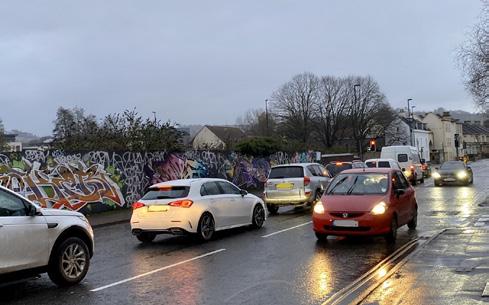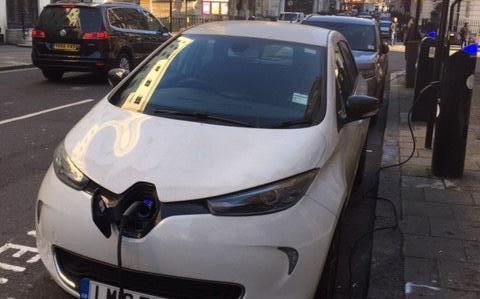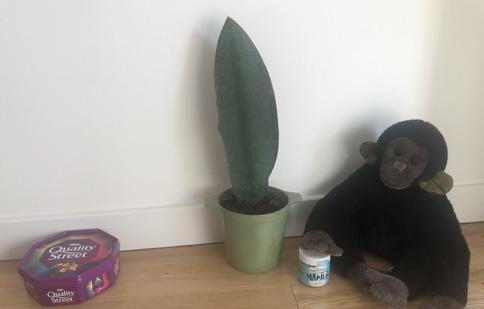
6 minute read
Cut a hole at the top to pull the rope
Climate change: what causes it and what can we do to stop it
We often hear about global warming and the effect it is having on our weather. But what is causing climate change? And what can we do to help to turn the tide. Four girls from year 5 have been investigating.
The problem with Methane
By Phoebe Berkovitch
What is Methane?
Methane is potent greenhouse gas; over 20 years, it’s 80 times more powerful than carbon dioxide at warming our planet’s atmosphere. Occurring naturally underground, methane is a gas used to generate electricity. Wetlands, marshes and rice paddies are areas where methane-producing bacteria have always existed but the problem is what we are doing to create dangerous levels of this powerful gas.
Where does this additional methane come from? The stomachs of cows, sheep and goats! Bacteria in their stomachs help to digest grass when they regurgitate it. 90-95% of methane released by cows comes from when they burp not when they fart (as people often think). Other sources include leaks from drilling sites, decomposing rubbish in landfill dumps and at the poles. Here, rapidly-melting ice is releasing rotted vegetation which is becoming the food for bacteria which then produce more disastrous methane.
If methane leaks into the air before being used it absorbs the suns’ heat warming of the atmosphere. Unless we use this methane to make electricity or reduce the amount we produce in the first place it will go on contributing to climate change.
What can we do?
Farmers can feed cows, sheep and goats foods such as seaweed, white clover, onion and garlic that lower their methane levels. Spanish scientists have found a way to do this without the milk tasting odd.
We can all eat less meat so that demand drops.
Landfill sites can use the methane they produce to generate fuel like some farms do with “methane digesters”.
People can reduce landfill by reusing, re-cycling and up-cycling.
Energy companies can prevent and repair leaks and invest in alternative fuels like solar and wind power.
Governments can make laws to help all of the solutions above.
What will you do to reduce methane?

Fossil Fuels
By Sophie Hudson
What is fossil fuel and how is it contributing to climate change?
Fossil fuels are layers of sedimentary organisms, which are plants and animals that have been dead for millions of years. We burn fossil fuels such as oil, natural gas, and coal to release their energy and power things such as cars, trains, and planes, and to heat our homes.
Although fossil fuels are both cheap and plentiful, they release lots of carbon dioxide when they are burned and that stays in our planet’s atmosphere like a blanket, trapping the sun’s heat so it cannot escape. Carbon dioxide and other greenhouse gases trap so much heat that they make the Earth’s temperature rise roughly one degree Celsius every decade. If that continues unchecked, in a hundred years it would have melted the ice caps, flooding nearby cities!
In Bath, the main producer of carbon dioxide is road traffic, and its effect is made worse because we are situated in a valley so the pollution stays trapped by the surrounding hills. To combat this, Bath & North East Somerset council has committed to reducing carbon emissions by 45% by 2026. However, reducing emissions is not enough: all the greenhouses gases we have emitted would still be present, and still lead to climate change.
What can I do to reduce the amount of fossil fuel that is used?
There are many ways we can reduce the amount of fossil fuel being used – some are big and some are small, but even small changes can make a big difference when millions of people try. For example, it’s easy to turn off lights when you aren’t using them or to switch off your car engine while you’re waiting in traffic, and both of those mean you will use less energy. To make a bigger impact, you could also try to use more public transport such as trains or buses, which would reduce road congestion and pollution at the same time.

Climate change from cars and factory pollution
By India Gardner
What is Car and Factory pollution and how is it contributing to climate change?
Cars and factories both use fossil fuels, which when burnt, release greenhouse gases such as carbon dioxide. When these greenhouse gases are released into the air, they trap heat in the Earth’s atmosphere and make the planet heat up. This is called climate change or global warming.
Cars and factory pollution are often thought of as the most visible form of pollution with their smokestack emissions and car exhausts.
Factories, as well as emitting airborne pollution, also contribute to water pollution, which harms animals and plants that live in rivers, streams and oceans.
Climate change is having a massive effect on the whole planet, but its effects can be seen especially in the polar regions because all the icebergs and ice are melting. This has damaged conditions for wildlife living there, causing them to be endangered with some facing extinction.
The devastating Australian bushfires wiped out millions of beautiful animals and destroyed their natural habitat. This is a direct consequence of climate change.
What can we do to reduce the amount of pollution produced?
People should walk, scoot, ride bikes, car-share and use public transport and swap diesel cars for electric cars.
Governments should provide more affordable electric public transport.
Laws should be passed to remove pollutants from industrial waste and factories fitted with filters. Factory owners should be fined for breaking these laws.
The government should also research for further alternative forms of energy to add to the existing wind turbines and solar energy.
People should walk, scoot, ride bikes, car-share and use public transport and swap diesel cars for electric cars.

Palm Oil and Deforestation
By Rozzy Commander
What is palm oil and how is it contributing to climate change?
Palm oil is an edible vegetable oil from the fruit of the Oil Palm tree. It originally came from Africa only but the trees were imported into South East Asia as an ornamental tree crop, and this is where most of our palm oil comes from today.
It is very difficult to avoid palm oil because it is in nearly half of the packaged products in supermarkets today. For example, it is found in doughnuts, chocolate, shampoo and toothpaste. This is because it is versatile, which means that it can be used for lots of different things. It is odourless and colourless so it doesn’t change the appearance or smell of the products it is in, and it helps to keep food fresh for longer.
Palm oil is contributing to climate change because, when native trees are cut down to make it, this causes deforestation, releasing lots of greenhouse gases into the atmosphere and contributing to global warming.
When the trees are cut down, sometimes children are made to work, day and night. Deforestation also endangers animals by destroying the habitats of orangutans, pygmy elephants, Sumatran rhinos and many other species.
What can I do to reduce the amount of palm oil used and produced?
Although you might think it would be helpful to give up palm oil altogether, this is not actually the case. Other vegetable oil crops use more land to produce the same amount of oil, and cause more deforestation, more greenhouse gases and more child labour.
The best thing to do is to check that the palm oil you use comes from a responsible source. An organisation called the Roundtable of Sustainable Palm Oil (RSPO) can help you with that.
You could also look at the WWF scorecard, which tells you which products and brands use sustainable palm oil.





